Posts Tagged ‘pets’
Understanding and Addressing Common Pet Behavioral Issues
How to Identify Signs of Pain in Pets: A Guide by Olsen Veterinary Clinic
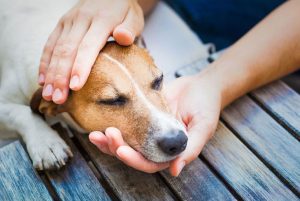 As pet owners, we deeply care about the well-being of our furry companions. However, unlike humans, pets can’t express their pain in words, making it challenging for us to recognize when something is wrong. Identifying signs of pain in pets is crucial to ensuring they receive prompt medical attention and live a happy, healthy life. At Olsen Veterinary Clinic, we encourage pet owners to be vigilant and aware of subtle signs of pain or discomfort in their pets.
As pet owners, we deeply care about the well-being of our furry companions. However, unlike humans, pets can’t express their pain in words, making it challenging for us to recognize when something is wrong. Identifying signs of pain in pets is crucial to ensuring they receive prompt medical attention and live a happy, healthy life. At Olsen Veterinary Clinic, we encourage pet owners to be vigilant and aware of subtle signs of pain or discomfort in their pets.
Common Signs of Pain in Pets
- Changes in Behavior: One of the first indicators of pain in pets is a noticeable change in their behavior. You may observe that a typically active dog becomes lethargic, or a usually independent cat becomes clingy or irritable. Pets may also become withdrawn, hide more frequently, or avoid interaction with their favorite humans or other animals in the house.
- Vocalization: Though pets can’t talk, they may communicate discomfort through vocalizations. If your pet starts whining, yelping, growling, or meowing more than usual, especially when touched or moved, it may indicate pain. Some pets might also begin purring excessively (in the case of cats), which can be a self-soothing mechanism rather than a sign of contentment.
- Changes in Posture and Movement: Limping, stiffness, difficulty getting up or lying down, or reluctance to jump or climb stairs are telltale signs of physical discomfort. Pets in pain may also adopt unusual postures, such as hunching their back or tucking in their abdomen. If your dog or cat seems to favor a particular side or avoids using a limb, this could indicate an injury or joint pain.
- Decreased Appetite: A decrease in appetite is another common sign that your pet may be experiencing pain. If your pet suddenly becomes uninterested in food or water, it could be due to discomfort, dental pain, or an underlying health issue. Pay attention to any changes in eating or drinking habits and consult your veterinarian if the behavior persists.
- Excessive Grooming or Licking: Pets in pain often focus on the area of discomfort by excessively licking, biting, or grooming. Dogs might chew at their paws or limbs, while cats might over-groom one specific area. In some cases, this behavior can lead to hair loss, skin irritation, or infection.
- Changes in Breathing: Pain can cause changes in your pet’s breathing patterns. Rapid, shallow breathing or panting excessively when not overheated may be an indication of distress. Some pets may also develop an irregular heart rate or appear restless when trying to sleep.
- Unexplained Aggression or Fear: Even the most gentle and loving pets can exhibit aggression when they are in pain. If your pet suddenly starts growling, snapping, or hissing, especially when touched, this could be a defensive response to pain. Additionally, a pet that becomes unusually fearful or anxious in situations where they would typically be comfortable might be signaling they are in distress.
- Digestive Issues: Vomiting, diarrhea, or constipation can be indirect signs of pain, especially if accompanied by other behavioral changes. Gastrointestinal discomfort may also lead to restlessness or a reluctance to lie down, as certain positions may aggravate the pain.
When to Seek Veterinary Attention
If you notice any of these signs, it’s essential to contact a veterinarian as soon as possible. Pain is often a symptom of an underlying condition that requires medical attention. Whether it’s due to injury, arthritis, dental disease, or an internal issue, early diagnosis and treatment can prevent further complications and improve your pet’s quality of life.
At Olsen Veterinary Clinic, we understand how important it is to keep your pets healthy and comfortable. Our team is committed to providing compassionate care and expert guidance to help you navigate any health concerns your pet may experience. If you suspect your pet is in pain, don’t hesitate to bring them in for an examination. Together, we can ensure your furry family member stays happy, healthy, and pain-free.
Being attuned to your pet’s behavior and recognizing the signs of pain early on can make a significant difference in their well-being. By taking a proactive approach and seeking veterinary care when necessary, you can help your pet enjoy a longer, healthier life. If you have concerns about your pet’s health or believe they may be experiencing pain, Olsen Veterinary Clinic is here to assist you every step of the way.
Tips for Traveling with Pets: A Guide from Olsen Veterinary Clinic
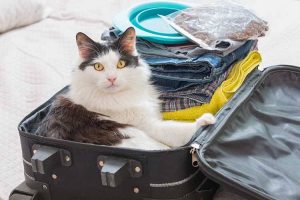 Traveling with pets can be a rewarding experience, but it requires careful planning and preparation to ensure a safe and comfortable journey for both you and your furry companion. Whether you’re taking a road trip, flying, or using public transportation, here are some essential tips to make your travel smooth and enjoyable.
Traveling with pets can be a rewarding experience, but it requires careful planning and preparation to ensure a safe and comfortable journey for both you and your furry companion. Whether you’re taking a road trip, flying, or using public transportation, here are some essential tips to make your travel smooth and enjoyable.
Preparation Before the Trip
- Visit the Veterinarian:
- Schedule a check-up to ensure your pet is healthy and up-to-date on vaccinations.
- Obtain a health certificate if required by your destination.
- Discuss any travel concerns and ask for recommendations on calming aids if your pet is prone to anxiety.
- Microchip and Identification:
- Make sure your pet is microchipped and the information is current.
- Attach an ID tag with your contact information to your pet’s collar.
- Pet-Friendly Accommodations:
- Research and book pet-friendly hotels or lodgings in advance.
- Confirm pet policies, including any restrictions or additional fees.
- Pack Essentials:
- Bring enough food and water for the duration of the trip, plus extra in case of delays.
- Include bowls, a leash, a waste disposal bag, grooming supplies, a first-aid kit, and any medications your pet needs.
- Pack a favorite toy or blanket to provide comfort and a sense of familiarity.
Safety Measures During Travel
- Secure Your Pet:
- Use a pet carrier, travel crate, or a pet seatbelt to keep your pet safe in the car.
- Ensure the carrier is well-ventilated and spacious enough for your pet to stand, turn around, and lie down comfortably.
- Never Leave Pets Unattended:
- Never leave your pet alone in a parked car, as temperatures can quickly become dangerous.
- If you need to stop, take your pet with you or ensure someone stays with them.
- Regular Breaks:
- Plan for regular breaks (every 2-3 hours) to allow your pet to stretch, relieve themselves, and hydrate.
- Use a leash and harness during stops to prevent your pet from running off in unfamiliar surroundings.
Stress-Reducing Strategies
- Comfortable Environment:
- Keep the carrier or crate cozy with your pet’s favorite blanket or bedding.
- Maintain a calm and quiet environment by minimizing loud noises and sudden movements.
- Familiarization:
- Gradually acclimate your pet to their carrier and the car before the trip.
- Take short practice trips to help your pet get used to the sensation of traveling.
- Calming Aids:
- Consider using natural calming aids like pheromone sprays or anxiety wraps.
- Consult with your veterinarian about the use of calming medications if your pet has severe travel anxiety.
- Stay Calm:
- Your pet can sense your emotions, so remain calm and relaxed to help reduce their stress.
- Speak to your pet in a soothing tone and provide reassurance throughout the journey.
Tips for Specific Modes of Travel
- Car Travel:
- Keep windows closed to prevent your pet from sticking their head out, which can be dangerous.
- Use sunshades to block direct sunlight and keep the car cool.
- Air Travel:
- Choose a pet-friendly airline and review their pet travel policies.
- Book a direct flight to minimize stress and reduce the risk of layovers or missed connections.
- Label your pet’s carrier with your contact information and a “Live Animal” sticker.
- Public Transportation:
- Check the specific regulations of the transportation service regarding pets.
- Ensure your pet is comfortable in their carrier and follow any rules regarding pet containment.
By following these tips from Olsen Veterinary Clinic, you can help ensure a safe, comfortable, and stress-free travel experience for you and your pet. Remember, preparation and patience are key to a successful journey with your furry friend. If you ever have any questions about your pet, contact us today. Happy travels!
Dr. Olsen’s Pet Spotlight: The Leonberger Dog Breed
 At Olsen Veterinary Clinic, we celebrate all breeds, and today, we’re delighted to spotlight the Leonberger—a breed renowned for its gentle temperament, impressive size, and striking appearance. Whether you are a seasoned dog owner or considering adding a Leonberger to your family, understanding this breed’s unique characteristics is essential.
At Olsen Veterinary Clinic, we celebrate all breeds, and today, we’re delighted to spotlight the Leonberger—a breed renowned for its gentle temperament, impressive size, and striking appearance. Whether you are a seasoned dog owner or considering adding a Leonberger to your family, understanding this breed’s unique characteristics is essential.
Origin and History
The Leonberger hails from Leonberg, Germany, where Heinrich Essig, a dog breeder, sought to create a breed that embodied the grandeur and loyalty of a lion. By crossbreeding Saint Bernards, Newfoundlands, and Great Pyrenees, Essig succeeded in developing the Leonberger, which soon became a favorite among European royalty. The breed was officially recognized in the late 19th century and has since garnered a loyal following worldwide.
Physical Characteristics
Leonbergers are a sight to behold. Males typically weigh between 110 to 170 pounds, while females range from 90 to 140 pounds. They stand 26 to 32 inches tall at the shoulder, exuding an aura of strength and nobility. Their dense, water-resistant double coat comes in shades of lion-yellow, golden to red-brown, often with a black mask. Regular grooming is essential to maintain their majestic coat and reduce shedding.
Temperament and Behavior
Despite their imposing size, Leonbergers are known for their gentle and friendly nature. They are affectionate, loyal, and thrive on human companionship, making them excellent family pets. Their intelligence and eagerness to please make them highly trainable, although early socialization and obedience training are crucial. Leonbergers are known for their calm demeanor, but they also possess a playful side and enjoy various activities, from hiking to swimming.
Health and Lifespan
Leonbergers are generally healthy, with a lifespan of 8 to 10 years. However, like all breeds, they are prone to specific health issues, including hip dysplasia, elbow dysplasia, and certain types of cancer. Regular veterinary check-ups, a balanced diet, and appropriate exercise are vital to ensuring their well-being. At Olsen Veterinary Clinic, we emphasize preventative care and offer tailored health plans to keep your Leonberger in optimal condition.
Exercise and Activity
Given their size, Leonbergers require regular exercise to maintain their physical and mental health. Daily walks, play sessions, and opportunities to run in a secure area are beneficial. They excel in activities like agility, obedience, and even water rescue, thanks to their strong swimming abilities. Engaging your Leonberger in diverse activities will keep them happy and prevent boredom-related behaviors.
Grooming Needs
Leonbergers have a thick, double coat that requires consistent grooming. Weekly brushing helps prevent mats and tangles, and more frequent grooming may be necessary during shedding seasons. Bathing should be done as needed, and regular checks of their ears, teeth, and nails are essential parts of their grooming routine. At Olsen Veterinary Clinic, we offer comprehensive grooming services to help keep your Leonberger looking and feeling their best.
Leonbergers and Families
Leonbergers are known for their exceptional compatibility with families. They are patient and gentle with children, often forming strong bonds with them. Their protective yet non-aggressive nature makes them excellent watchdogs without being overly territorial. However, due to their size, supervision around small children is recommended to prevent accidental knock-overs.
The Leonberger is a remarkable breed that combines beauty, strength, and a loving temperament. They make wonderful companions for those who can accommodate their size and grooming needs. At Olsen Veterinary Clinic, we are passionate about providing the best care for your Leonberger, ensuring they lead a healthy, happy life. Whether you’re a current Leonberger owner or considering bringing one into your home, our team is here to support you with expert advice and services.
For more information or to schedule a consultation, please contact Olsen Veterinary Clinic. We look forward to helping you and your Leonberger thrive together.
Understanding Pet Vaccinations: Ensuring Your Pet’s Health
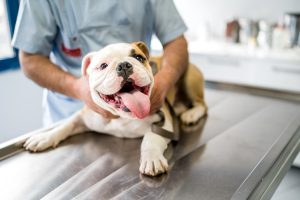 As pet owners, we all want our furry companions to live long, healthy, and happy lives. One of the most crucial aspects of maintaining your pet’s health is ensuring they receive the appropriate vaccinations. At Olsen Veterinary Clinic, we believe in educating pet owners about the importance of vaccinations, the recommended vaccination schedule, and how these preventive measures contribute to your pet’s overall well-being.
As pet owners, we all want our furry companions to live long, healthy, and happy lives. One of the most crucial aspects of maintaining your pet’s health is ensuring they receive the appropriate vaccinations. At Olsen Veterinary Clinic, we believe in educating pet owners about the importance of vaccinations, the recommended vaccination schedule, and how these preventive measures contribute to your pet’s overall well-being.
Why Are Pet Vaccinations Important?
Vaccinations are vital for protecting pets from various infectious diseases, some of which can be life-threatening. These vaccines work by stimulating the immune system to recognize and fight specific pathogens, such as viruses and bacteria, if your pet is exposed to them in the future. Here are some key reasons why vaccinations are essential:
1. Disease Prevention
Vaccines help prevent numerous diseases that can affect pets. For example, canine parvovirus, distemper, and rabies in dogs, and feline leukemia virus and panleukopenia in cats, are all preventable through vaccination.
2. Public Health
Some diseases that affect pets, like rabies, can be transmitted to humans. By vaccinating your pet, you are also protecting yourself, your family, and your community from potential zoonotic diseases.
3. Legal Requirements
In many areas, certain vaccinations, such as rabies, are required by law. Ensuring your pet is up-to-date with their vaccines helps you stay compliant with local regulations.
4. Cost-Effective Health Care
Preventing diseases through vaccination is often far less expensive than treating the diseases once they occur. Regular vaccinations can save you from costly treatments and emergency vet visits.
Recommended Vaccination Schedule
At Olsen Veterinary Clinic, we follow a vaccination schedule that aligns with the guidelines set by veterinary health authorities. Here is a general outline of the recommended vaccination schedule for dogs and cats:
For Puppies and Dogs:
- 6-8 weeks:
- Distemper
- Parvovirus
- Adenovirus (Hepatitis)
- Parainfluenza
- 10-12 weeks:
- Booster for Distemper, Parvovirus, Adenovirus, and Parainfluenza
- Bordetella (Kennel Cough)
- 14-16 weeks:
- Booster for Distemper, Parvovirus, Adenovirus, and Parainfluenza
- Rabies
- 1 year and annually thereafter:
- Annual boosters for Distemper, Parvovirus, Adenovirus, Parainfluenza, and Rabies
- Optional: Lyme disease, Leptospirosis, and Influenza based on your dog’s risk factors
For Kittens and Cats:
- 6-8 weeks:
- Feline Viral Rhinotracheitis (FVR)
- Calicivirus (FCV)
- Panleukopenia (FPV)
- 10-12 weeks:
- Booster for FVR, FCV, and FPV
- Feline Leukemia Virus (FeLV)
- 14-16 weeks:
- Booster for FVR, FCV, FPV, and FeLV
- Rabies
- 1 year and annually thereafter:
- Annual boosters for FVR, FCV, FPV, FeLV, and Rabies
How Vaccinations Contribute to Your Pet’s Well-Being
Regular vaccinations play a crucial role in maintaining your pet’s overall health and well-being. Here’s how:
1. Boosts Immunity
Vaccines strengthen your pet’s immune system, making them more capable of fighting off infections and reducing the severity of illnesses if they do occur.
2. Reduces Disease Spread
By vaccinating your pets, you are helping to control the spread of contagious diseases within the pet population. This is particularly important in communal settings like parks, boarding facilities, and grooming salons.
3. Improves Quality of Life
Healthy pets are happy pets. Vaccinations protect against debilitating diseases that can significantly reduce your pet’s quality of life, ensuring they stay active and vibrant.
4. Longevity
Preventive care, including regular vaccinations, has been proven to extend the lifespan of pets. By safeguarding them against diseases, you are giving your pet the best chance at a long, healthy life.
At Olsen Veterinary Clinic, we are committed to providing the highest standard of care for your pets. Vaccinations are a cornerstone of preventive health care, and we encourage all pet owners to adhere to the recommended vaccination schedules. By doing so, you are not only protecting your pet but also contributing to the overall health of the animal community.
If you have any questions about your pet’s vaccination needs or would like to schedule an appointment, please contact us at Olsen Veterinary Clinic. Together, we can ensure your pet’s health and happiness for years to come.
Unveiling the Smile: Celebrating Pet Dental Health
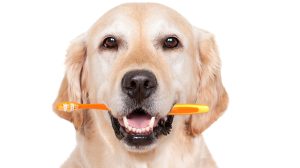 While we often focus on keeping our pets healthy through diet and exercise, dental health tends to be overlooked. However, just like us, our pets need proper dental care to maintain overall well-being. Let’s delve into the importance of dental hygiene for our furry friends and discover how we can ensure they flash those pearly whites for years to come.
While we often focus on keeping our pets healthy through diet and exercise, dental health tends to be overlooked. However, just like us, our pets need proper dental care to maintain overall well-being. Let’s delve into the importance of dental hygiene for our furry friends and discover how we can ensure they flash those pearly whites for years to come.
Why Pet Dental Health Matters
Oral health is a vital aspect of your pet’s overall health and can affect their quality of life in significant ways. Dental issues in pets can lead to pain, discomfort, difficulty eating, and even more severe health problems if left untreated. From plaque and tartar buildup to gum disease and tooth decay, the consequences of neglecting dental care can be serious. Additionally, bacteria from dental problems can enter the bloodstream and potentially affect other organs, such as the heart, liver, and kidneys, making regular dental care crucial for your pet’s longevity.
At-Home Dental Hygiene Tips:
Fortunately, there are several simple yet effective ways to promote good dental hygiene for your furry friends right at home:
- Brushing: Just like humans, pets benefit from regular brushing. Use a pet-specific toothbrush and toothpaste to gently clean their teeth. Start slowly and gradually increase the duration of brushing sessions as your pet becomes accustomed to the routine.
- Dental Chews and Toys: Provide your pet with dental chews and toys designed to promote oral health. These products help reduce plaque and tartar buildup by encouraging chewing and saliva production.
- Healthy Diet: Feed your pet a balanced diet consisting of high-quality food and treats. Avoid giving them sugary or sticky treats, as these can contribute to dental problems.
- Regular Inspections: Take the time to regularly inspect your pet’s mouth for signs of dental issues such as bad breath, swollen gums, or discolored teeth. Early detection can prevent the progression of dental disease.
The Role of Professional Dental Cleanings
While at-home care is essential, professional dental cleanings are also necessary to maintain optimal oral health for your pet. Veterinary professionals have the expertise and specialized equipment to perform thorough cleanings and address any underlying dental issues. During a dental cleaning, your pet will undergo scaling to remove plaque and tartar, polishing to smooth the tooth surfaces, and in some cases, extractions or other necessary treatments. Your veterinarian may also recommend dental X-rays to assess the health of your pet’s teeth and gums below the surface.
Let’s pledge to prioritize our furry companions’ oral health and well-being. By incorporating at-home dental hygiene practices and scheduling regular professional cleanings, we can help our pets maintain healthy smiles and lead happier, healthier lives. Remember, a little care goes a long way in ensuring that your pet’s teeth shine as bright as their personalities! Here at Olsen Veterinary Clinic, we are happy to get you on a regular schedule to ensure your pet’s dental health is strong. Contact our office today!
Nutritional Tips for Pets
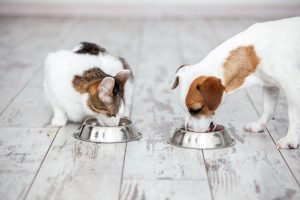 Providing proper nutrition for pets is crucial for the health and well-being of your pets. Here are some general nutritional tips to ensure your pets receive the necessary nutrients.
Providing proper nutrition for pets is crucial for the health and well-being of your pets. Here are some general nutritional tips to ensure your pets receive the necessary nutrients.
- Consult with a Veterinarian: Before making any significant changes to your pet’s diet, consult with a veterinarian. They can provide personalized advice based on your pet’s breed, age, health status and specific needs.
- Balanced Diet: Ensure your pet’s diet is well-balanced and meets their nutritional requirements. This typically includes a mix of proteins, carbohydrates, fats, vitamins, and minerals.
- Quality Commercial Pet Food: Choose High-quality commercial pet food that is appropriate for your pet’s life stage (e.g., puppy, adult, senior). Looke for brands that list a specific meat source as the first ingredient and meet the standards set by relevant authorities.
- Portion Control: Over feeding can lead to obesity and other health issues. Follow the recommended portion sizes on the pet food packaging and adjust based on your pet’s age, activity level, and overall health.
- Fresh Water Ensure your pet has access to fresh, clean water at all times. Hydration is essential for overall health.
- Avoid Human Foods: Many human foods can be harmful to pets. Avoid feeding them chocolate, caffeine, alcohol, onions, garlic, grapes, raisins, and certain artificial sweeteners like Xylitol.
- Monitor Treats: While treats can be a part of your pet’s diet; be mindful of the quality. Treats should not make up more than 10% of your pet’s daily calorie intake.
- Regular Exercise: Combine a balanced diet with regular exercise to maintain a healthy weight and promote overall well-being.
- Special Dietary Needs: Some pets may have specific dietary needs due to allergies, sensitivities, or medical conditions. If your pet requires a special diet, work closely with your veterinarian to find a suitable option.
- Regular Checkups: Schedule regular veterinary check-ups to monitor your pet’s overall health, weight, and nutritional needs. Adjust their diet as necessary based on any changes in health or lifestyle.
- Transition Gradually: If you are changing your pet’s diet, do so gradually over a week to allow their digestive system to adjust. Mix the new food with the old food in increasing proportions.
Remember that individual pets may have unique nutritional requirements, so it is essential to tailor their diet to their specific needs with guidance from a veterinarian. Here at Olsen Veterinary Clinic, we are committed to the health of your pet. Please contact us at any time with questions.
The Importance of Regular Veterinary Check-ups
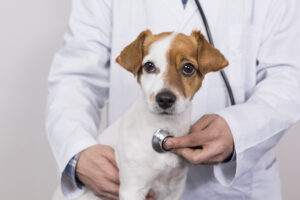 Regular veterinary check-ups are crucial for maintaining the overall health and well-being of your pets. These routine visits play a key role in preventative care and early detection of health issues. Here are some reasons why regular veterinary check-ups are important.
Regular veterinary check-ups are crucial for maintaining the overall health and well-being of your pets. These routine visits play a key role in preventative care and early detection of health issues. Here are some reasons why regular veterinary check-ups are important.
Preventative Care:
Regular check-ups allow veterinarians to administer vaccinations, parasite control, and dental care. Preventative measure can help protect your pet from various illnesses, ensuring they lead a healthier longer life.
Early Detection of Health Issues:
Pets, like humans, can develop health issues that may not be immediately apparent. Regular check-ups enable veterinarians to detect potential health problems early, often before symptoms become severe. Early detection can significantly improve the prognosis and treatment outcomes.
Disease Screening:
Veterinary check-ups may include screenings and tests for common pet diseases. These screenings can help identify conditions such as diabetes, kidney disease, and certain types of cancer in their early stages, allowing for timely intervention.
Dental Health:
Dental issues are common in pets, and they can lead to various health problems if left untreated. Regular veterinary visits often include dental examinations and cleanings, promoting good oral health and preventing dental diseases.
Nutritional Guidance:
Veterinarians can provide guidance on proper nutrition based on your pet’s age, breed, and health condition. A well-balanced diet is essential for maintaining your pet’s overall health and preventing nutrition-related issues.
Behavioral Assessment:
Veterinarians can assess your pet’s behavior during routine visits. Changes in behavior may be indicative of underlying health issues and addressing them early can prevent further complications.
Weight Management:
Maintaining a healthy weight is crucial for your pet’s well-being. Regular check-ups allow veterinarians to monitor your pet’s weight and provide guidance on nutrition and exercise to prevent obesity-related health issues.
Senior Pet Care:
As pets age, their healthcare needs may change. Regular check-ups become even more critical for senior pets to monitor and address age-related conditions, such as arthritis, dental problems, and organ dysfunction.
Client Education:
Veterinary visits are an opportunity for pet owners to learn about their pet’s specific needs, behaviors, and potential health risks. Education from veterinarians empowers pet owners to provide the best care possible.
In summary, regular veterinary check-ups are essential for preventative care, early detection of health issues, and ensuring that your pets lead healthy and happy lives. Establishing a consistent schedule of veterinary visits can contribute significantly to the overall well-being of your beloved companions. Contact our office today to schedule yours or if you have any questions.
10 Pet Health Myths Debunked
 There are several pet health myths that circulate widely. It’s important to separate fact from fiction for the well-being of our furry friends. Here are some common pet health myths debunked.
There are several pet health myths that circulate widely. It’s important to separate fact from fiction for the well-being of our furry friends. Here are some common pet health myths debunked.
1. Myth: A Warm, Dry Nose Indicates Illness
Debunked: A warm, dry nose does not necessarily mean a pet that is sick. Dogs and cats can have varying nose temperatures throughout the day. Factors like weather, hydration, and activity levels play a role.
2. Myth: Cats Always Land on Their Feet
Debunked: While cats have a remarkable ability to right themselves during a fall, it is not foolproof. Cats can still suffer injuries if they fall from a significant height.
3. Myth: Milk Is Good for All Cats
Debunked: Many adult cats are lactose intolerant and feeding them milk can lead to digestive upset and diarrhea. It is best to provide fresh water as their primary source of hydration.
4. Myth: Garlic and Onions are Safe for Dogs and Cats
Debunked: Garlic and onions contain compounds that can be toxic to pets and cause damage to their red blood cells. It’s advisable to keep these foods away from pets.
5. Myth: All Humans Medications Can be Given to Pets
Debunked: Many human medications are toxic to pets. Never give your pet any medication without consulting a veterinarian, as the wrong dosage or type can be harmful and even fatal.
6. Myth: Dogs Will Only Eat Grass if They’re Sick
Debunked: Some dogs eat grass simply because they like the taste or texture. While it’s not entirely clear why dogs eat grass, it’s not always a sign of illness.
7. Myth: Annual Vaccinations Are Always Necessary
Debunked: Some Vaccination needs may vary based on the pet’s health, lifestyle, and age. Some vaccines provide long-lasting immunity, and over-vaccination can have risks. Consult with your vet to create an appropriate vaccination schedule
8. Myth: Pet’s Age Seven Years for Every Human Year
Debunked: The rate at which pets age can vary by species and size. For example, small dog breeds tend to live longer than larger breeds. The one-size fits all calculation is not accurate.
9. Myth: Dry Cat Food Helps Clean Teeth
Debunked: While some dental diets may promote oral health. Relying solely on dry kibble is not a substitute for regular dental care. Brushing your cat’s teeth and providing dental treats can be more effective.
10. Myth: Scratching Furniture Means Cats are Being Destructive
Debunked: Scratching is a natural behavior for cats. Providing appropriate scratching posts and regularly trimming their nails can help redirect this behavior without resorting to punishment
Always give us a call for accurate information and advice tailored to your pet’s specific needs.
5 Ways to Keep Your Dog Safe in the Snow
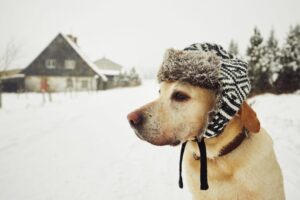 Keeping a dog safe in the snow is important, as cold weather can pose various risks to their health and well-being. Here are five ways to ensure your dog stays safe in snowy conditions.
Keeping a dog safe in the snow is important, as cold weather can pose various risks to their health and well-being. Here are five ways to ensure your dog stays safe in snowy conditions.
-
- Ensure Adequate Shelter: Ensure that your dog has access to a warm and dry shelter, such as a well-insulated doghouse or a heated indoor space. Limit the time your dog spends outdoors in extreme cold weather, especially during snowstorms.
- Use Protective Gear: Invest in appropriate winter gear for your dog, such as a waterproof and insulated coat. Booties can protect their paws from ice, snow, and harmful chemicals like de-icing salts. Make sure the gear fits properly and doesn’t cause any discomfort.
- Monitor Paw Health: Snow and ice can accumulate between the paw pads, leading to discomfort or injuries. Regularly check your dog’s paws for ice balls, cuts, or signs of frostbite. Wipe their paws with a damp cloth to remove any salt or chemicals.
- Keep Them Hydrated: Cold weather can be dehydrating and dogs may be less inclined to drink water when it is cold. Ensure that your dog has access to fresh water at all times. Dehydration can contribute to health issues, including susceptibility to hypothermia.
- Adjust Diet and Monitor Weight: Dogs my burn more calories in cold weather to stay warm. Adjust their diet accordingly and monitor their weight. A well-nourished dog is better equipped to handle the challenges of cold weather.
Remember that individual dogs have different tolerance levels for cold weather, and factors such as breed, age, and health should be taken into consideration. Always obeserve you dog for signs of discomfort or stress, and consult with your veterinarian if you have specific concerns about your dog’s well-being in snowy conditions.
If at any time you have concerns or questions, do not hesitate to contact our office. Have a safe and fun winter with your pup!

 At Olsen Veterinary Clinic, we understand that pets, much like humans, can exhibit a range of behavioral issues. These behaviors can stem from anxiety, fear, lack of proper training, or even medical conditions. While some behavioral quirks are simply part of a pet’s unique personality, others can cause stress for both the pet and their owner. Fortunately, most of these behaviors can be managed or corrected with proper guidance and training.
At Olsen Veterinary Clinic, we understand that pets, much like humans, can exhibit a range of behavioral issues. These behaviors can stem from anxiety, fear, lack of proper training, or even medical conditions. While some behavioral quirks are simply part of a pet’s unique personality, others can cause stress for both the pet and their owner. Fortunately, most of these behaviors can be managed or corrected with proper guidance and training.